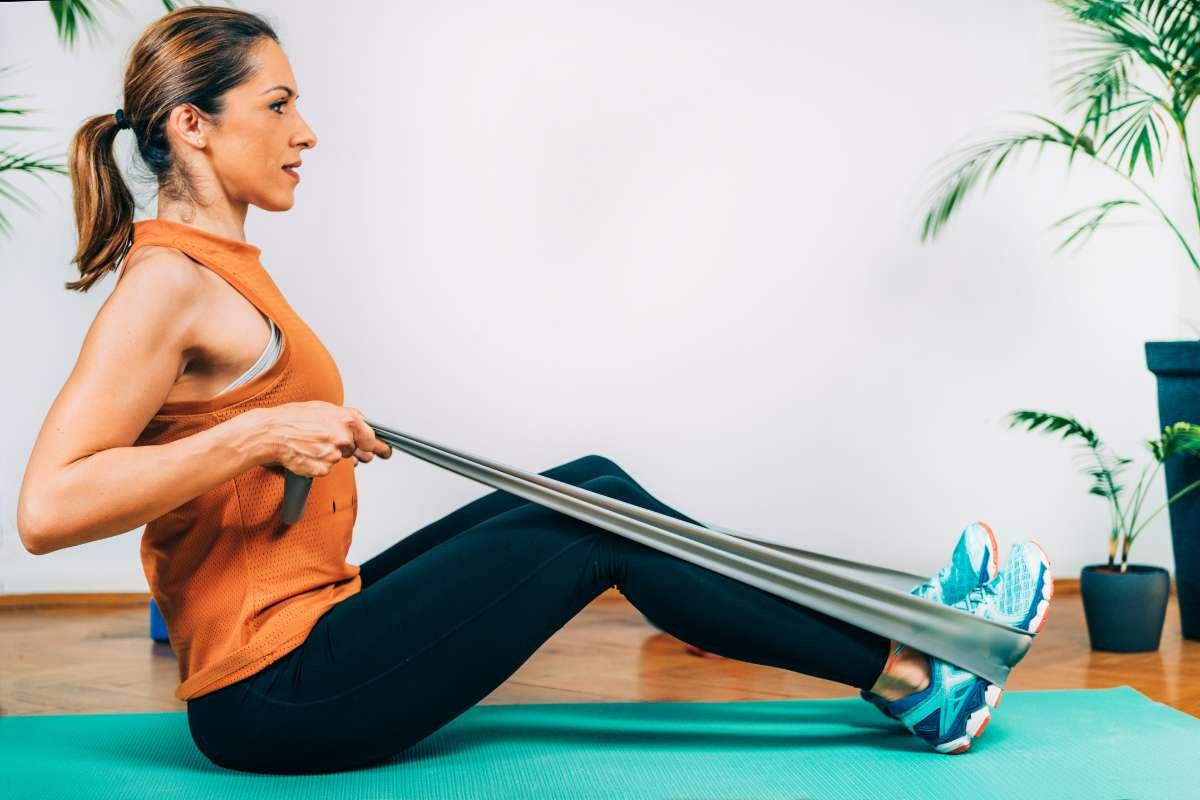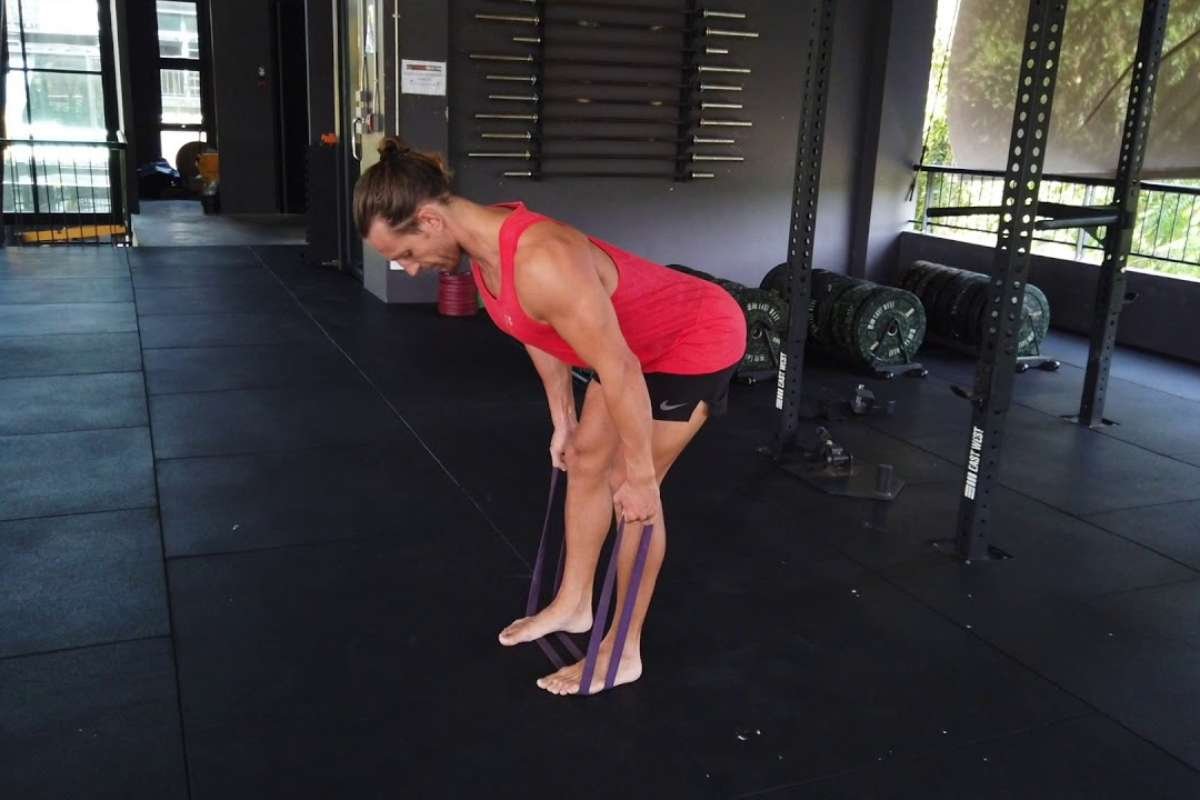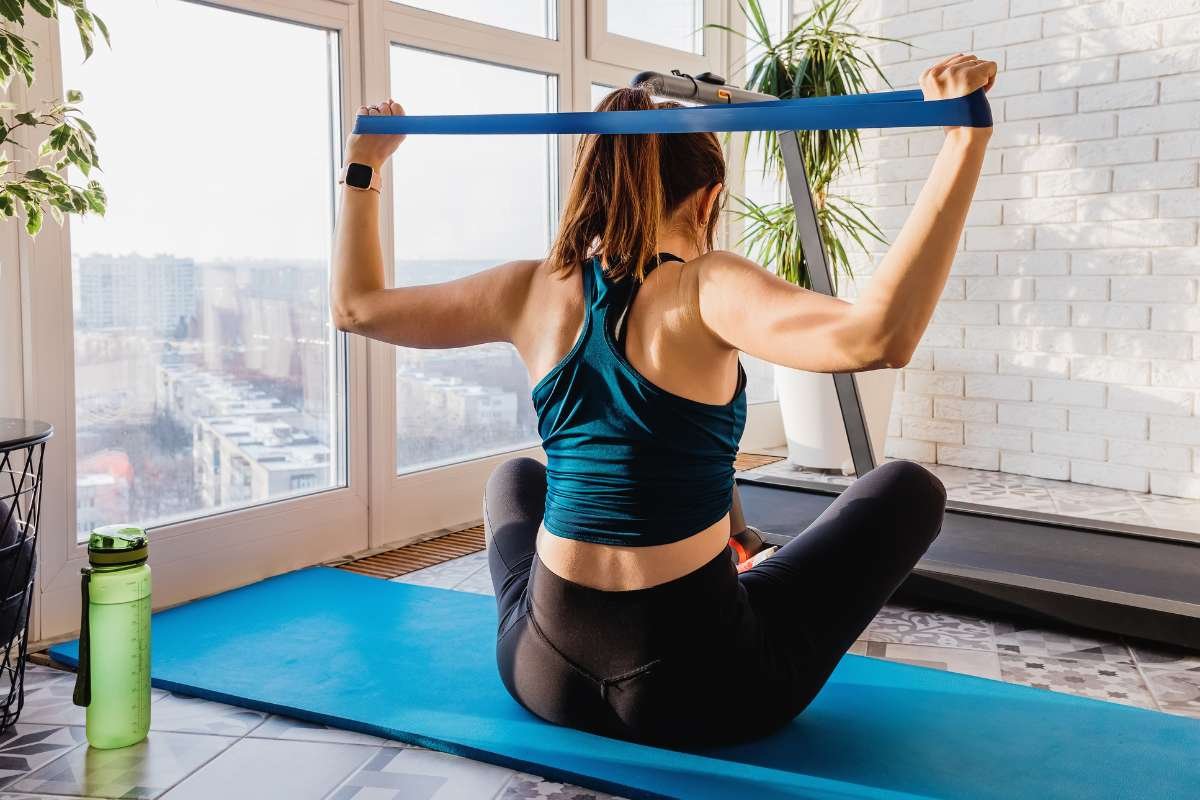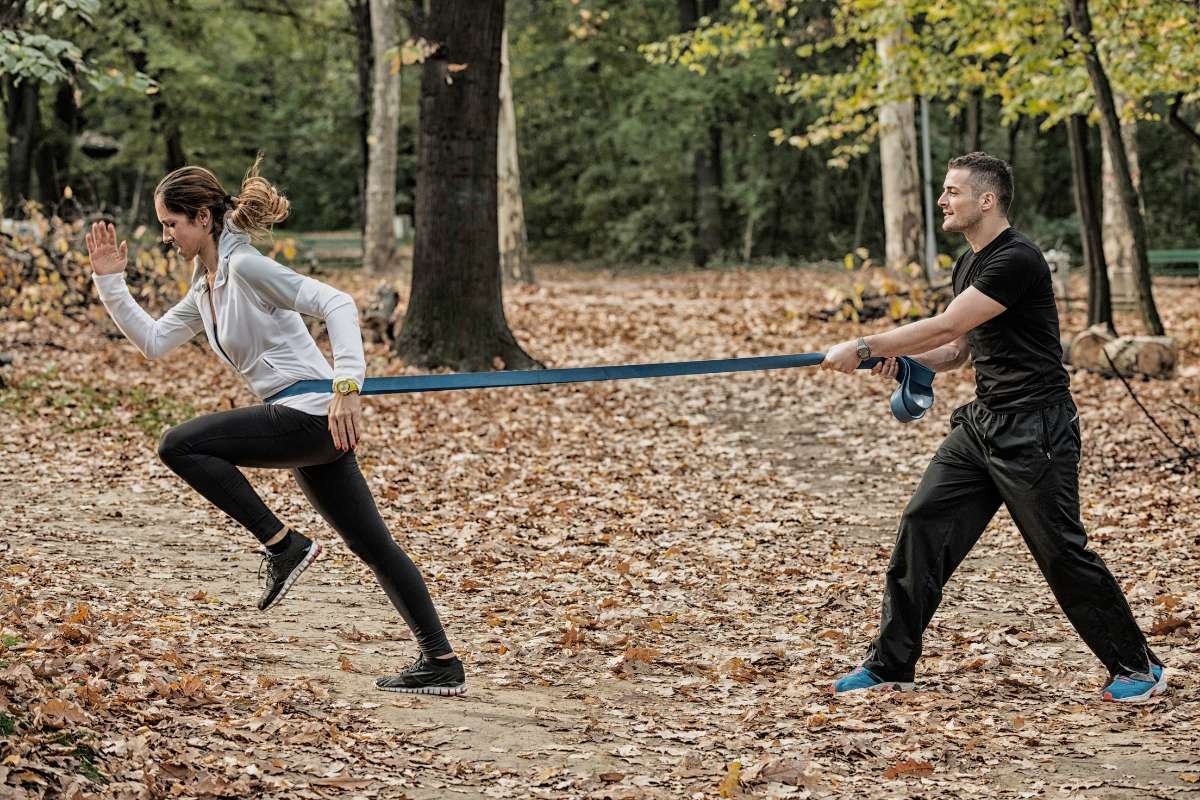Lower back pain is one of the most common problems people have with their muscles and bones, affecting millions across all ages. Whether you’re an office worker, an athlete, or just someone who likes to stay active, keeping your lower back strong is important for good health and preventing injuries. Resistance bands, which are cheap and easy to carry, provide a safe and effective way to strengthen this important area.
In this guide, we’ll look at expert-recommended lower back resistance band exercises that help improve stability, relieve pain, and support your daily movements, without needing a gym.
Why Focus on Lower Back Strength?
The lower back, or lumbar region, is the foundation for many physical activities. It helps support the spine, stabilize posture, and transfer energy during movement. Weakness in this area can lead to:
- Chronic back pain
- Poor posture
- Reduced mobility
- Higher risk of injury during lifting or twisting motions
Strengthening the lower back is about more than pain relief—it’s essential for longevity and functional fitness.
Benefits of Using Resistance Bands for the Lower Back
Resistance bands are increasingly being recommended by physiotherapists and strength coaches for rehabilitation and strength training. Here’s why they’re especially effective for targeting the lower back:
- Controlled tension: Unlike free weights, bands provide variable resistance, which protects the joints and reduces the risk of strain.
- Engages stabilizer muscles: Bands challenge balance and form, helping recruit deep core and spinal muscles.
- Portable and versatile: Great for home workouts, travel, or office breaks.
- Beginner-friendly: Ideal for people recovering from injury or just starting their fitness journey.
Now let’s dive into the top lower back resistance band exercises approved by fitness professionals.
7 Best Lower Back Resistance Band Exercises:
1. Banded Good Mornings
- Targets: Erector spinae, glutes, hamstrings
- How to do it:
- Step on a resistance band with both feet, shoulder-width apart.
- Place the other end of the band around your neck or upper traps (like a barbell).
- Keeping a slight bend in your knees and a neutral spine, hinge at the hips and lower your torso forward.
- Engage your glutes and hamstrings to return to a standing position.
- Why it works: This compound movement strengthens the posterior chain and mimics the mechanics of deadlifts without the heavy load.
2. Seated Band Rows

- Targets: Mid-back, rhomboids, lower traps, erector spinae
- How to do it:
- Sit on the floor with your legs extended forward.
- Wrap a resistance band around the soles of your feet and hold the ends.
- Sit tall, engage your core, and pull the band toward your torso while squeezing your shoulder blades.
- Slowly release and repeat.
- Pro tip: Focus on posture—avoid rounding your back to prevent compensating with the wrong muscles.
3. Banded Bird Dogs
- Targets: Core stabilizers, multifidus, glutes
- How to do it:
- Attach a resistance band around your foot and opposite hand.
- Start in a tabletop position (on hands and knees).
- Extend your banded hand and foot simultaneously, keeping your spine neutral.
- Return to the starting position with control and repeat on both sides.
- Why it works: This movement enhances coordination and strengthens the muscles that stabilize the spine.
4. Standing Band Deadlifts

- Targets: Lower back, glutes, hamstrings
- How to do it:
- Step onto the band with both feet hip-width apart.
- Hold the ends of the band with both hands.
- Hinge at the hips, keeping your back flat, and lower your hands to just below your knees.
- Push through your heels to stand tall, squeezing your glutes at the top.
- Trainer tip: Keep your head aligned with your spine to avoid neck strain.
5. Resistance Band Pull-Throughs
- Targets: Glutes, hamstrings, lumbar spine
- How to do it:
- Anchor the resistance band to a low, stable point behind you.
- Stand facing away from the anchor, straddling the band between your legs.
- Grab the band with both hands and step forward to create tension.
- Hinge at the hips, then drive through your heels to return to standing.
- Effectiveness: This exercise mimics a hip thrust or kettlebell swing, great for developing power and stability in the lower back.
6. Reverse Band Leg Extensions

- Targets: Glutes, hamstrings, lower spine stabilizers
- How to do it:
- Anchor the band low to the ground behind you.
- Wrap it around one ankle while on all fours.
- Extend the leg back and upward against the band’s resistance.
- Return slowly and repeat before switching legs.
- Best for: Activating isolated glute and lumbar muscles during rehab or warm-ups.
7. Isometric Banded Supermans
- Targets: Entire posterior chain
- How to do it:
- Lie on your stomach with a resistance band looped between your hands and feet.
- Simultaneously lift your arms, chest, and legs off the ground, stretching the band.
- Hold for 5-10 seconds, then lower slowly.
- Benefits: Builds endurance in the lower back and improves posture through static strength.
Similar Articles:
- Daily Resistance Band Exercises for Weight Loss You Can Do Anywhere
- Sculpt Stronger Core Muscles with These Stretch Band Exercises for Abs
- Effective Stretch Band Exercises for Legs Without Gym
Common Mistakes to Avoid
When performing lower back resistance band exercises, proper form is non-negotiable. Here are frequent errors and how to fix them:
- Rounding the spine: Always maintain a neutral spine to avoid disc pressure.
- Using too much resistance: Start light and focus on control before adding tension.
- Over-reliance on momentum: Perform movements slowly and mindfully to fully engage the muscles.
- Ignoring the core: Engage your abdominal muscles during each move to support your back.
How Often Should You Train Your Lower Back?
Consistency is key, but recovery is equally important. Here’s a general recommendation:
- Beginners: 2-3 times per week with light to moderate resistance.
- Intermediate/Advanced: 3-4 times per week, with progressive overload.
- Rehabilitation: As guided by your physical therapist.
Pair these sessions with mobility drills and gentle stretching for well-rounded back health.
When to See a Professional?
While lower back resistance band exercises are safe for most, it’s important to know your limits. If you’re experiencing:
- Sharp or shooting pain
- Numbness or tingling
- Pain lasting more than a few weeks
- Difficulty performing basic movements
…consult a certified physical therapist or orthopedic specialist before continuing any exercise regimen.
Similar Articles:
- Stretch Band Exercises for Arms Without Going to the Gym
- Simple Stretch Band Exercises for the Chest to Get Stronger at Home
- Think Leg Stretch Band Exercise Is Too Easy? Think Again!
Final Thoughts
Lower back resistance band exercises are great for strengthening one of the most injury-prone parts of the body. When done regularly and correctly, they can improve your posture, reduce pain, and help you live a more active life—all without needing heavy equipment or a gym.
Keep in mind that the goal isn’t just to exercise; it’s to move better, feel stronger, and avoid injuries. Whether you’re new to fitness or recovering from pain, these movements build a strong foundation that helps in every part of your daily life.







